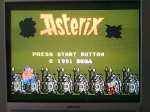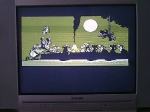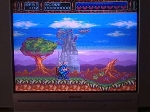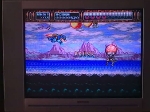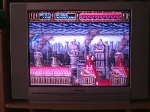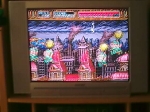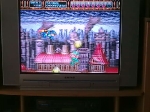Autumn reminds me of Secret of Mana
Back in 1996, my younger brother and I pooled our money together and bagged ourselves a great little SNES combo – coming to the end of the 16-bit era meant that there were good opportunities to see the other side of the fence for a small outlay (our household was a staunch Sega proponent) and enough time had passed to bury the proverbial hatchet. If memory serves, we put together around $200, which bought us a SNES Killer Instinct pack – SNES console with RF lead/AC adapter, controller, as well as a boxed copy of Killer Instinct (don’t laugh :P) and an extra controller as a bonus. We’d been thinking about it for a while at that point, as one of my brother’s mates had a SNES and had brought it over a few times and I’d been able to play some Zelda here and there, and one of my mates, McAdam, had snapped up a SNES the X-Mas prior to ’96 and had introduced me to the awesomeness of a rented copy of Secret of Mana one weekend. To complete the peer pressure, another mate from school got me hooked on Killer Instinct (again, stop laughing!). So, we took the plunge. Or rather, my little brother went away on camp for a weekend, so Mum and I went out to the mall and grabbed a SNES pack, and I picked up a copy of Secret of Mana for myself. The only catch was that I wasn’t allowed to play the SNES or even open it until he came back from his trip. It did make for an awesome Sunday evening of gaming though, and 3:30pm couldn’t come fast enough the next day at school 🙂
The time of year we got the SNES was when it starts to get a bit of a cold snap in the evening (well, “cold” by Australian standards anyway), so whenever we get a burst of cold like we’re getting at the moment, it reminds me of cranking out the SNES for the first time, and just as importantly, playing Secret of Mana with my brothers.
There was so much about the game that made it special – despite the nonsensical plot thanks to the game’s initial development as a Super CD title, there was so much to love about it. The graphics were pure 16-bit era Japanese development – colourful, charming and packed to the rafters with great animation and flourishes. The music was absolutely amazing – the SPC700 was able to do some amazing stuff, but the quality of the compositions for Secret of Mana were enchanting, especially since my other 16-bit adventures were dominated by the Mega Drive’s synth which didn’t have anywhere near the range of features of the SNES’ audio system (that being said, there’s a particular charm to what some of the better developers were able to pull off with the Mega Drive’s audio setup). But more than all of that, the game was so much fun to play and accessible. While the AI was a bit stupid, playing the game with someone else made it so much more fun and broke down a lot of barriers that surrounded the RPG systems in the 16-bit era. While I was already a JRPG convert thanks to the sublime Phantasy Star 2 (thanks to my brother Miguel on that one, and for starting me on the RPG path with the SSI-developed D&D games on the C64 and PC before that), it was great to see those concepts presented in such a different format. The only bummer is that I never got to play through the game on 3-player mode – my younger brother managed to do this with some of his mates when they rented a multitap from one of the neighbourhood video stores, and he assures me that it was awesome.
As much as I adore this game, there are two things about it that saddens me – first of all, the direct sequel, Seiken Densetsu 3, never got an official English release by Squaresoft (instead we got Secret of Evermore, which while not as polished, actually isn’t too shabby if you can psychologically separate it from the former when playing it). Secondly, all the games since the SNES games have arguably been rubbish. I remember downloading trailers for Legend of Mana on the PSX off Gaming Age on my old dial-up connection and being absolutely gobsmacked by some amazing hand-drawn visuals and sublime audio. Sadly, the final game featured a terrible translation and didn’t carry anywhere near the charm and persistent game world that the SNES games had. Fast forward to the PS2, and we get Dawn of Mana, yet another terrible interpretation of the franchise. Thankfully, the 3-party action-RPG spirit lived on in the excellent Kingdom Hearts games, but even that’s bittersweet – the natural extension of the engine that powered Kingdom Hearts would have made a natural base to build up a living, breathing and colourful world to set a new Mana game that echoed the successes of old. Such a wasted opportunity.
If I could make one last-ditched and naive request to SquareEnix, it would be this – create a HD remake of Secret of Mana with glorious 2D artwork, and tell the story that you originally wanted to tell before the game got chopped apart to fit the limited space of a cartridge. I’m not asking for voice work or anything like that (because in all likelihood it means they won’t make it a bilingual release) or animated cut scenes – 3 players online or offline simultaneously, great music, beautiful spritework, the full story, digital distribution (to reduce costs, though I’d love a physical release). I have a feeling SquareEnix like money, and this kind of project would be a virtual printer of cash. At least in my naive view of the current state of video gaming.
